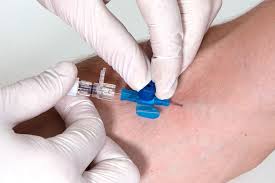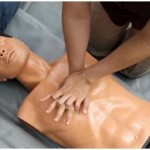 One of the most challenging clinical skills that a healthcare professional has to master is to not only know what is an IV insertion/injection, but to perform an IV insertion. There are patients with difficult venous access and this procedure can take up to 10 minutes. The advantage of the IV procedure is that allows the liquid substances to be distributed directly into the vein with an immediate effect for the patient. One of the most used IV insertions is the peripheral IV line. The peripheral IV line allows the hypodermic needle to be placed in a short catheter into a peripheral vein.
One of the most challenging clinical skills that a healthcare professional has to master is to not only know what is an IV insertion/injection, but to perform an IV insertion. There are patients with difficult venous access and this procedure can take up to 10 minutes. The advantage of the IV procedure is that allows the liquid substances to be distributed directly into the vein with an immediate effect for the patient. One of the most used IV insertions is the peripheral IV line. The peripheral IV line allows the hypodermic needle to be placed in a short catheter into a peripheral vein.
Introduce yourself first!
When you are introducing yourself you have to ask your patient if he/she have had an IV injection before. If this is the first time you have to relax your patient. If your patient is scared, you have to tell him/her that this is not your first time, you have a lot of experience, it is not going to heart and the needle is too small. It is very important, because if your patient is scared than the blood vessels are contracted and while you are inserting the needle into the vein there are chances to penetrate the wall of the vein. Relax your patient! Do not let your patient think that you are scared, uncertain or suspicions about something.
Before you do anything else make sure that you put all your things in front of you. Do not leave your things away when you are with your patient, you will need a syringe or a bandage. Now:
What Is IV Insertion? – Videos
Videos on
this site are for entertainment purposes only. Please
do not attempt any of the procedures seen in these videos
without formal medical education & licensing.
What Is The IV Insertion or Injection Procedure?
- 30cc syringe with 30cc normal saline
- Absorber disposable sheet
- tourniquet
- angio catheter
- iv tubing
- 4 pieces of tape
- Rubber gloves
- Gauze
- 2 alcohol wipes
Your patient have to sit or lie down with his/her hand placed over a hard surface. Release your patient’s hand from clothes. Apply a tourniquet high on the upper arm. It should be tight to visibly indent the skin but without causing any kind of discomfort. There are some patients with more difficult veins and you cannot see them, in these cases take an alcohol and rub the area. The veins will become much easier to see them. This is a trick that most nurses use it. If you cannot see any veins popping up from the distention caused by the tourniquet, you have to feel them by palpating the arm. If you still cannot find any veins cover the arm in a warm compress to help with peripheral vasodilation. If no suitable veins are found, you have to move to the other arm. Once you find a suitable vein you have to disinfect the area.
Select your angiocatheter
A 20 or 22 gauge catheter is always suitable. Try to take a part and put it back together in order to get a sense how it works. It is important to know how much force is required to slide the plastic catheter over the metal stylet.
IV insertion procedure
Use your hand to apply counter tension against the skin. With your left hand pull the skin distally toward the wrist in the opposite direction of the needle. Do not compress the inflow to the vein. It may cause vein collapse. Put the angiocatheter through the skin over top of the vein or adjacent to the vein.
If you are with the angiocatheter in the vein look for a dark red flashback of blood at the angiocatheter hub, this means that the angiocatheter is within the vein. Slide the plastic angio catheter deeper into the vein over the top of the needle. The plastic catheter should slide forward easily so don’t force it! Release the tourniquet, apply gentle pressure over the vein and remove the needle. Once you remove the needle, put the needle aside to be disposed.
Lock the IV tubing to the angio catheter by advancing and rotating the luer locking mechanism. Just twist it to be fully locked. Tape the IV place and use at least three or four strips to prevent accidental removal. You have to place one or two pieces of tape over the puncture site and one piece of tape over loops of tubing so there is some strain relief.






















